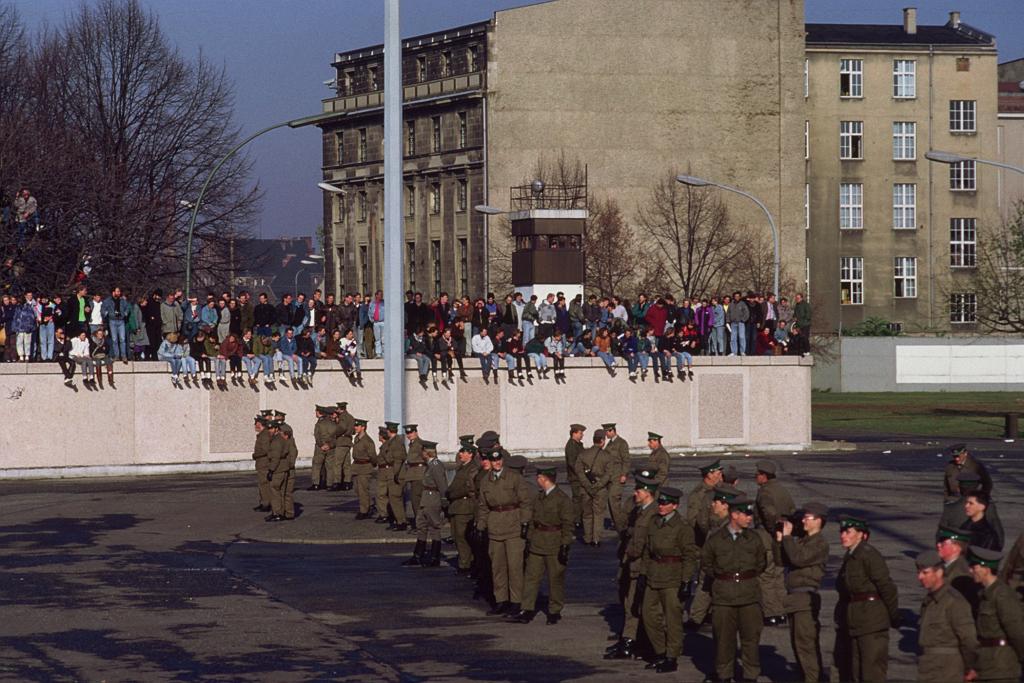A new book edited by Professor Hanhimäki and colleagues addresses diverse issues and challenges several “common wisdoms” about the end of the Cold War. Together, its contributions provide insights on the role of personalities as well as the impact of transnational movements and forces on the unexpected political transformations of the late 1980s and early 1990s. More details with Jussi Hanhimäki.
There is extensive literature on the end of the Cold War. What motivated you to publish a new volume on the subject?
There are several reasons. First, the end of the Cold War was probably the most dramatic transformation of the international system to take place in the last half-century. It meant the end to a rivalry – between communism and capitalism, between East and West, between the Soviet Union and the United States – that had influenced most parts of the globe since the end of World War II. So it was a rather important event – or rather series of events.
Second, the causes of the transformation continue to be debated and influence current-day politics. It matters, for example, whether we understand the end of the Cold War as implying a “victory” of one set of political ideas over another or whether we seek more complex (structural or otherwise) explanations. History, particularly recent history, can easily be used to justify current policy.
Third, historians have only relatively recently gained access to the documentary materials that enable us to examine the end of the Cold War in sufficient detail.
In your introduction to the book you deal with “unexpected transformations”. What were those?
Two major transformations occurred in 1989–91. First, Europe was dramatically transformed as the Soviet bloc essentially collapsed in 1989 – sometimes called the Year of Miracles – when communist parties lost power in a series of mainly peaceful upheavals (the one exception being Romania). The event that symbolised this transformation was the collapse of the Berlin Wall that had divided the German capital in two since the early 1960s. The following year, the Warsaw Pact was dissolved and Germany re-unified. In short, the Iron Curtain was no more.
The second and closely related transformation was the collapse of communism, which was most evidently on display when the Soviet Union itself ceased to exist. While communism/Marxism has survived as an ideology that continues to hold appeal around the world, it lost its major state sponsor in December 1991.
The word “unexpected” is in the book’s title because, with very few exceptions, no one (historians, international relations theorists and policymakers included) expected any of the dramatic events of 1989–91 to happen. Of course, we now think they were virtually “inevitable”! That, to me at least, is a fascinating paradox.
What is the main output of your chapter “Threat or Opportunity? Kissinger, Brzezinski, and the Demise of the Soviet Union”?
My chapter examines the influence that two of America’s foreign policy “grandees” – former Secretary of State Henry Kissinger and former National Security Adviser Zbigniew Brzezinski – had on the Reagan and Bush administrations’ policies in the late 1980s and early 1990s, after they had left office. The major argument is that Kissinger and Brzezinski’s influence illustrates the contradictory impulses in American policy at the time: one (Kissinger) emphasised the need for continuity and stability, the other (Brzezinski) highlighted the extraordinary opportunities offered by the Soviet Union’s demise. In essence, such conflicting advice was reflected in the policies of the Bush administration that was overtaken by the rapid pace of events in 1989–91 because it failed to anticipate the major transformations and their impact on US foreign policy.
Do the other contributions in the volume add up to a larger argument?
The various chapters address very different issues, from nuclear limitation negotiations to the role of specific individuals in the processes that contributed to the end of the Cold War. If they have one thing in common, it is, simply, to emphasise a basic trend in the emerging historiography of the Cold War (and its ending): the need to “de-centre” our understanding of the causes that produced this unexpected transformation three decades ago. In other words, what mattered as much as, if not more than, the policies enacted by the United States and the Soviet Union were the relationships and activities of smaller nations and transnational actors.
Ultimately, this book will probably complicate and confuse our understanding of the end of the Cold War and, to a certain extent, of the Cold War itself. And this is the central point. Complexity is the only credible way of explaining virtually anything in history. The end of the Cold War is no exception to this basic rule of thumb.
Jussi Hanhimäki is Professor of International History at the Graduate Institute, where he is also member of the Global Migration Centre’s Steering Committee and Advisory Faculty for the Global Governance Centre. His main research interests cover American foreign policy, transatlantic relations, and the international history of the Cold War. His books include Neutrality and Neutralism in the Global Cold War (coeditor, 2015), The Rise and Fall of Détente: American Foreign Policy and the Transformation of the Cold War (2013), and The Cold War: A History in Documents and Eyewitness Accounts (2004, with Odd Arne Westad).
* * * * *
Full citation of Professor Hanhimäki’s latest book:
Blumenau, Bernhard, Jussi M. Hanhimäki, and Barbara Zanchetta, eds. New Perspectives on the End of the Cold War: Unexpected Transformations? London, New York: Routledge, 2018.
Interview by Marc Galvin, Research Office.


